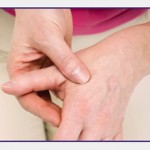
I am flying back to San Francisco from Washington, D.C. It is late September, but publishing deadlines require that this column be submitted in a few days. I have been in Washington for a successful legislative briefing on Capitol Hill, as well as the second annual ACR Quality Summit. I will actually be home until the annual meeting because October is the only month all year that I will not get on an airplane for ACR business.
My year as ACR president has sped by. While I look forward to not checking my e-mail inbox after almost every patient visit, I will miss being at the center of the action when my term is over. I spent 11 of the last 15 years on the ACR Board of Directors, including the past five on the Executive Committee.
Year of Challenges and Successes
What were the biggest issues of the past year? To date, I’ve been fortunate to not experience a major crisis, such as when Vioxx was withdrawn only a few days before the annual meeting a couple of years ago. However, the ACR has been active in a multitude of areas. The organization is much larger and more sophisticated than when I started as a volunteer two decades ago. Our “survival functions” – the annual scientific meeting and our journals – operate so smoothly that we almost take them for granted. These well-oiled machines have superb volunteer leaders and experienced, talented staffs.
There has been incredible growth in the area of quality since the inception of the Quality Measures Committee (recently renamed the Quality of Care Committee) only three years ago. In his first year as chair, Dan Solomon, MD, MPH, has worked tirelessly to coordinate activities in quality indicators, disease classification and response criteria, treatment guidelines, and drug safety. When the ACR revised its strategic plan earlier this year, it placed special priority on regularly updating treatment guidelines. RA and osteoarthritis guidelines will be revised every three years and other disease treatment guidelines will be updated on a regular, albeit less frequent, basis. The decision to produce evidence-based guidelines is expensive and time consuming, but should guarantee wide acceptance when they are published in Arthritis Care & Research.
Advocacy at the federal level has been strengthened under the steady hand of Joseph Flood, MD, chair of the Government Affairs Committee, with superb support from our own ACR staff and the Washington, D.C.-based lobbying firm Patton Boggs. For the first time, the annual Washington, D.C., Board of Directors meeting was moved from August to May to allow the entire leadership to make Capitol Hill visits on the same day. After much deliberation, the ACR Board made the difficult but correct decision to launch RHEUMPAC, the ACR’s political action committee (PAC). Like it or not, PACs are part of the American political process. The ACR must support candidates who are sympathetic to our issues, and through the PAC, the ACR will gain increased access to our elected officials.
The ACR has expanded support for practitioners, both in private practice and academic faculty practice settings. We’ve hired additional skilled coders and created Webcasts and list serves. We’ve strengthened our commitment to physicians at the state and local levels by, for example, reorganizing the Regional Advisory Committee.
I am heartened by the success of the ACR Research and Education Foundation (REF) under the tireless leadership of James O’Dell, MD. The REF has raised approximately $20 million for the RA initiative “Within Our Reach” while continuing its core functions of recruiting medical students and residents into rheumatology, supporting fellowship training, and providing research grants for early career development.
Wonderful People, Wonderful Memories
While working on these various issues, I have met amazing people. The ACR’s Executive Committee has functioned extraordinarily well as a team without a moment of rancor, despite dealing with a number of difficult issues. We have committed board members and incredibly hard-working committee chairs.
I have a multitude of wonderful memories. I will certainly never forget the meeting that several ACR leaders from Massachusetts and I had with Senator Edward Kennedy (D-Mass.) this May. We spent 30 minutes discussing important health policies with this 45-year veteran of the Senate and champion of healthcare causes. He was well informed and supportive of our positions on important issues such as Sustainable Growth Rate reform; increased research funding; dual energy X-ray absorptiometry reimbursement; and the Arthritis Act, for which he is the co-sponsor in the Senate.
I also got to meet rheumatologists from around the globe. As president-elect, I attended the 2006 PANLAR meeting in Lima, Peru. My wife, Linda, and I added on a vacation in Machu Picchu. We found ourselves climbing around the awe-inspiring ruins with EULAR officers Tore Kvien, MD, and Paul Emery, MD. That night, Linda and I had a wonderful dinner in the Sanctuary Hotel at the entrance to Machu Picchu with Paul and Tore as well as their wives, Shirley Emery and Turid Kvien. Acquaintances evolved into lasting friendships in the course of a few hours.
I learned long ago that the success of any volunteer organization is a direct result of its full-time staff. The ACR is extremely fortunate to have Mark Andrejeski as its executive vice president. Having recently completed 20 years of service to the ACR, Mark is now the longest-serving medical society executive. He leads and inspires an incredibly talented, committed, and hard-working staff of nearly 70. I would like to close with a special word about Lynn Bonfiglio. Lynn will retire in December after more than 50 years as an ACR employee. Though small in stature, Lynn has been a giant in her commitment to the ACR. It is hard to imagine that we will ever have anyone else who works so long and so tirelessly for our organization. Join me in wishing Lynn a long, healthy, and happy retirement.
Dr. Birnbaum is president of the ACR. Contact him via e-mail at [email protected].

